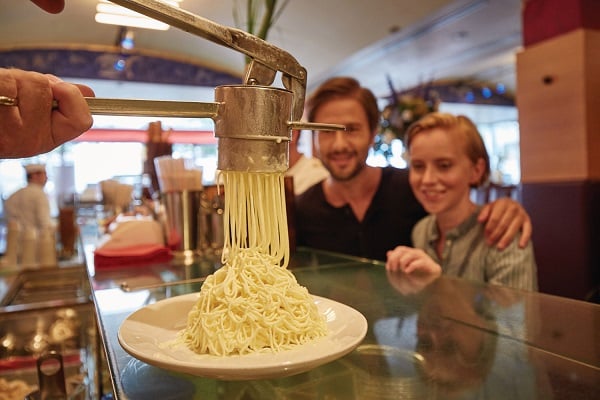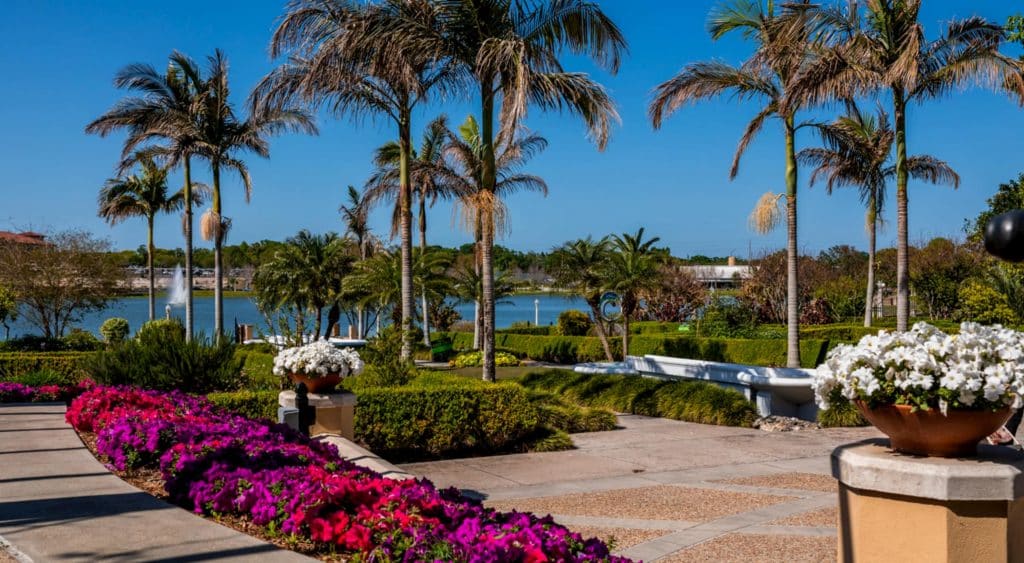Taste Treats and Gourmet Creations – SouthWest Germany’s culinary inventions

SouthWest Germany, the German federal state of Baden-Württemberg, is known for its inventors. Both the car and the bicycle were invented here. But the tradition of innovation extends to more than technology. When it comes to food, the creative instinct has been – and still is – just as strong. And it is not limited to just one part of SouthWest Germany. Here are six examples of new ideas that were developed across the region, from Mannheim down to the southern Black Forest.
Ritter Sport: Dare to Be Square
“Quadratisch. Praktisch. Gut” / “Quality. Chocolate. Squared.” That’s the motto on every bar of Ritter Sport, the chocolate bar, whose square shape fits oh-so easily into your pocket. Millions of brightly-coloured bars of different, wittily-named flavours leave the factory in Waldenbuch every day. Back in 1932, in this small town, 30 minutes south of Stuttgart, Clara Ritter had a brilliant idea. Instead of producing rectangular bars of chocolate, the family business should change to a square, thick shape. Why? Because it would fit easily into a jacket pocket and wouldn’t break. In 1976, Alfred Otto Ritter, her son, decided to expand the range, to include unusual flavours, varieties, and Knick-Pack packaging. The Waldenbuch success story conquered the world and today exports to over 100 countries. Alongside the Ritter factory is the SCHOKOSHOP outlet store and a modern art museum – with square pictures!
Fontanella Spaghetti Ice Cream: The Mannheim Taste Treat
It looks like a plate of pasta with tomato sauce and grated Parmesan, but it is cold, sweet and totally yummy. Today, spaghetti ice cream is a bestseller in every German ice cream parlour, but it was not born in Italy. It was invented in the city of Mannheim. There is, however, an Italian connection. In 1969, teenager Dario Fontanella was experimenting in his father’s ice cream parlour. He picked up a familiar kitchen gadget used for making Spaetzle, the egg noodles that are a typical Swabian dish – and used it to produce ice cream instead. After much trial and error, the squiggly, wriggly ice cream “noodles” were born. Made from vanilla ice cream, doused with strawberry purée and white chocolate, a brand-new taste treat was born: spaghetti ice cream!
Rems Valley Gems: Wine Pearls
A few years ago, winemaker Daniel Kuhnle invented a taste experience that was brand new and truly unique: Käpsele or wine pearls. These are tiny “balls” of wine, which are coated with a vegan alginate. Think of them as wine “pearls”, or wine “caviar”. Use them in the kitchen and in the bar. They are delicious straight out of the tin, served over ice, put into soup or a sauce, or added as a stylish garnish. The small globules keep their shape and consistency even when heated. In the Remstal valley, near Stuttgart, Kuhnle himself recommends that his white and rosé wine pearls are served slightly chilled. No wonder he was awarded Baden-Württemberg’s prize for innovation in 2019.
The Spaetzle Shaker: As Easy as 1, 2, 3
Spaetzle, egg noodles, are a much-loved dish in SouthWest Germany. But making spaetzle by hand is a long and laborious task. One day in Tübingen, 40 minutes south of Stuttgart, when Susann Hartung’s son Julien asked for his favourite food yet again, she had a brainwave. She bought a plastic jar and drilled some holes in the lid. Into the jar went the ingredients for the dough, along with some marbles to aid the mixing. The idea was simple: shake a few times; give a quick squeeze. Hey presto! Out come spaetzle! The spaetzle shaker was born! Now this handy gadget enables busy parents – and their children – to make an age-old family favourite quickly and easily.
Preserving Jars: Grandma Was Right!
In the past few years, many of us have rediscovered the joys of preserving food. The techniques are much the same as in Grandma’s day: prepare, cook, seal and store. What helped the process was the 1892 invention of glass jars with a rubber seal and a metal locking mechanism. These were the brainchild of Johann Carl Weck, who lived in Öflingen, a village near Waldshut in the southern Black Forest. This part of SouthWest Germany is known for the quality and quantity of its orchard fruits and vegetables. Weck’s jars, with their trademark orange rubber seal, meant that everyone could preserve delicacies like asparagus and strawberries and enjoy them even in the depths of winter. And we still can today!
Learn more about SouthWest Germany
Have your say Cancel reply
Our emails to you has bounced travelmole.com Or You can change your email from your profile Setting Section
Your region selection will be saved in your cookie for future visits. Please enable your cookie for TravelMole.com so this dialog box will not come up again.
Price Based Country test mode enabled for testing United States (US). You should do tests on private browsing mode. Browse in private with Firefox, Chrome and Safari
You can see how this popup was set up in our step-by-step guide: https://wppopupmaker.com/guides/auto-opening-announcement-popups/
Subscribe/Login to Travel Mole Newsletter
Travel Mole Newsletter is a subscriber only travel trade news publication. If you are receiving this message, simply enter your email address to sign in or register if you are not. In order to display the B2B travel content that meets your business needs, we need to know who are and what are your business needs. ITR is free to our subscribers.
 United Kingdom
United Kingdom United States
United States Asia Pacific
Asia Pacific

























BA suspending all Heathrow to Abu Dhabi flights
Unexpected wave rocks cruise ship
Woman dies after going overboard in English Channel
Report: Cruise guest died after ship lashed in heavy storm
British teen in serious condition after paraglider collision